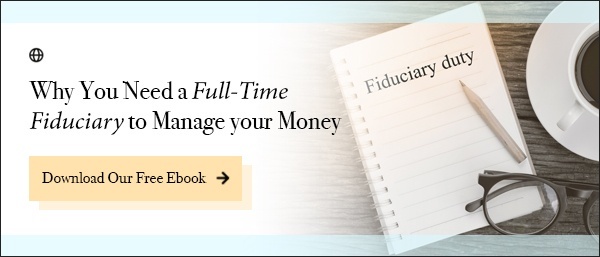Global View Investment Blog
How to Build an Investment Portfolio
Many investors are worried about investing now. A decade-old bull market, sky-high valuations, increasing interest rates, geopolitical instability and disruptive technologies all create concerns.
Investors are worried about investing in stocks. And in bonds!
Is now the best time to learn how to build an investment portfolio? But there are other risks (to waiting). Low yields and rising inflation can eat away at purchasing power. Things you need aren’t getting cheaper.
With risk (and lost opportunity) everywhere, how should you put your money to work now?
Understanding the Role of Risk in Your Investment Portfolio
Before developing an investment strategy, investors need to gain a better understanding of risk. Without risk, there are no returns. Going too far to minimize risk from a portfolio limits potential returns. It can even make you run out of money.
If you are near retirement, you are probably a moderate risk investor. Moderate risk investors want to make 6 percent or so a year. They are more worried about losing money that they can’t make back than knocking the cover off the ball. So why are you trying to time the market?
Risk and return are joined at the hip. This means you must know how much risk you can tolerate before setting a return goal. We have a disciplined process for this: Understanding Volatility For Your Investment Strategy.
Remember, there is always a trade-off between return and risk. And if the return you seek is higher than the risk you can bear, you must make a tradeoff. The tradeoff can be a later retirement, reduced spending or higher saving. We can help find a beneficial tradeoff. Sometimes it means continuing to work part-time a few years. We recently helped a client improve his odds by 6 percent simply by working part-time for one more year.
Don’t get me wrong, we strive to get better returns than you might expect for the risk you take. But we never plan for that. Instead we make sure we have the right expectations for risk based on the return you seek.
One way to control risk is to make sure the investments you own are fundamentally sound. A great start to effectively managing risks is to focus on quality. This Webinar on building portfolios is helpful.
Fundamentally Strong Companies
In our stock portfolio, we strive to own companies with three common characteristics: high-quality, good growth and a good valuation.
At the risk of boring you, let’s talk math. If you are an engineer, you know calculus happens in more than one variable. We consider all variables (quality, growth, valuation) at once.
It’s not just a high-quality business, but it must be a high-quality business with good growth and good valuation. Or it could be a high-quality business with reasonable growth and a great valuation. But companies must be high-quality to be included in our stock portfolio. We also like companies that pay more dividends than industry peers.
When we look at the 2,200 companies covered by Morningstar to find the best companies, we find most of these are U.S.-based. But some are also international conglomerates.
We need more help finding smaller companies in the U.S. and overseas. And more than 90 percent of all new companies are formed overseas.
We Also Use Focused Portfolio Managers, Especially Overseas
Because this is about math, we need help to find ideas in the smaller-company space around the world. Remember, we are always looking to own companies with the right combination of quality, growth and valuation. Because there are more than 30,000 companies, we can’t do this in-house. Most of these companies are too young to have been recognized as “great.” This means you need to be more diversified.
First, consider that international stocks make up three-fourths of the global economy. That means your portfolio is vastly under-diversified when it is limited to U.S. stocks.
Second, most of the real economic growth is occurring outside of the U.S. There are 136 countries with higher GDP growth than the U.S., with countries in Asia, Southeast Asia and Africa growing at three times the rate of GDP in the U.S.
Third, the growth of income per capita in these countries, the key measure of consumer spending capacity, also exceeds the U.S. by the same measure.
Finally, consider that 90 percent of the world’s population exists outside the U.S. The population growth in these countries is seven to eight times that of the U.S. It’s no coincidence that 9 out of 10 new companies are formed outside of the United States!
Some of the biggest, most-established and most-profitable high-quality companies are solidly positioned to capitalize on the global growth phenomenon. Take Swiss-based Nestle for example. The world’s largest food and beverage company sells more than 10,000 products in more than 180 countries around the world with significant exposure in the fastest growing emerging economies. That’s all the diversification you might need; though you could and should build a well-diversified portfolio around several of these types of companies.
While the demographic and economic data point to a much higher ceiling for international stocks, they also happen to be much cheaper than U.S. stocks. After surging at a near vertical trajectory since the election, U.S. stocks are overvalued relative to global stocks, by a wide margin. Many high-quality companies with deep, international exposure are more fairly valued than most S&P 500 companies. Lower valuations also translate to higher dividend yields, which adds a greater margin of safety to portfolios.
We diligently find international managers who have their own skin in the game and limit the size of funds they invest. Like many other things, we can’t understand why everyone isn’t doing this.
Making Money in Bonds, When Most Investors are Losing Money in Bonds
Remember, to reduce the risk of your portfolio, you must own bonds. How much depends on your risk tolerance, but nearly everyone owns some.
Unfortunately, the outlook for traditional bonds is not good. Rates fell from 1980 to November 2016. They have been rising since. It’s harder to make money in bonds when rates rise. The backdrop for spending, tax and growth means interest rates are likely to rise for some time. Fortunately, having a global approach to investing, and an ability to invest in overlooked opportunities, can really help.
Because the fiscal crisis caused banks to focus more on making money on consumers than lending to small business, this has led to opportunities for enterprising investors.
These opportunities can broadly be classified in three areas. The first is residential mortgage-backed securities. Mortgages issued to poor credit quality homeowners running up to the housing bubble are now owned by excellent credit quality homeowners. Much of this happened as consumers tightened belts and increased their credit worthiness, not because the bonds were traded or re-rated. Bonds formerly labelled as high yield are no longer risky. In fact, we have portfolios of these bonds that have been less risky than the overall bond market!
Another opportunity is in private credit. Because small businesses can no longer get loans from banks, they have resorted to borrowing from private equity and venture capital lenders. But these lenders want to make more than 9-10 percent per year. They want the equity returns expected of private equity of more than 15 percent. Enterprising investors willing to lend to these companies can get high returns for the willingness to give up daily liquidity. We are happy to have this opportunity to get excellent risk adjusted returns for our clients, who are OK with giving up daily liquidity.
A final opportunity is special situations. Remember, there are about 30,000 global companies in the world that are publicly traded. Companies essentially have one way to own shares of these companies, by buying shares of stock. But each company has multiple ways to own their bonds, which mature in differing years. For example, if each company on average has 10 different bonds outstanding, there are more than 300,000 corporate bonds that need to be priced correctly. Guess what – they are not! This creates the third opportunity to reduce risk in bonds.
Putting it All Together
Research shows this global approach can increase return and lower risk.
When learning how to build an investment portfolio, global diversification is the key to increasing portfolio stability while capturing returns wherever they occur. High-quality companies with high-growth ceilings purchased at fair values introduce less risk to a portfolio than overvalued companies regardless of their growth prospects.
That’s not all. We are thinking about all the technological disruptions coming down the pipe. Blockchain technology may one day change not only financial transactions but how organizations and markets work. It’s inevitable.
Building a successful investment portfolio today requires taking both a global view and a long view. With the right portfolio of stocks combined with the right mix of lower risk investments like bonds, and making sure you understand what is coming, we make sure you stay on the path.
For more information on how to build an investment portfolio, contact us for a no-strings-attached one-on-one meeting. A little planning now can save you lots of time and money in the future.

Written by Ken Moore
Ken’s focus is on investment strategy, research and analysis as well as financial planning strategy. Ken plays the lead role of our team identifying investments that fit the philosophy of the Global View approach. He is a strict adherent to Margin of Safety investment principles and has a strong belief in the power of business cycles. On a personal note, Ken was born in 1964 in Lexington Virginia, has been married since 1991. Immediately before locating to Greenville in 1997, Ken lived in New York City.
Are you on track for the future you want?
Schedule a free, no-strings-attached portfolio review today.
Talk With Us






